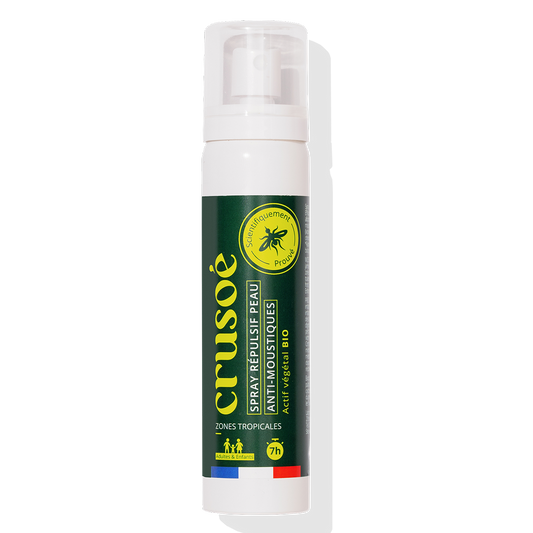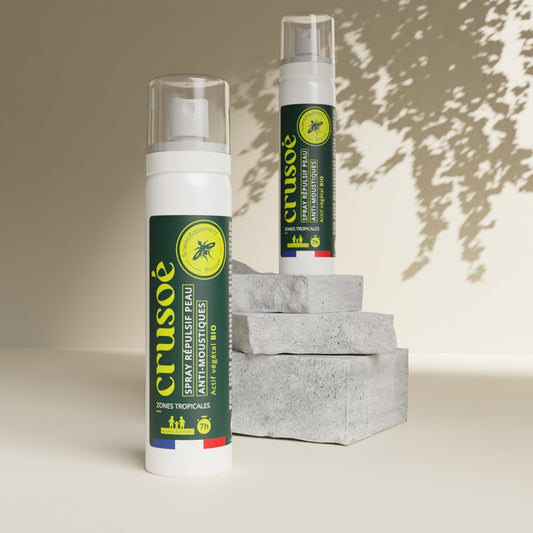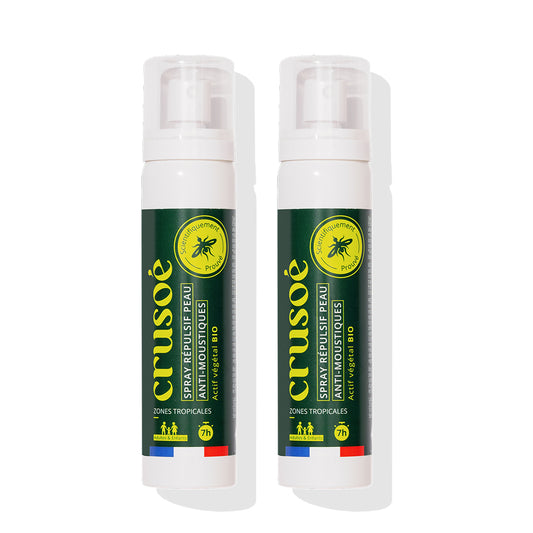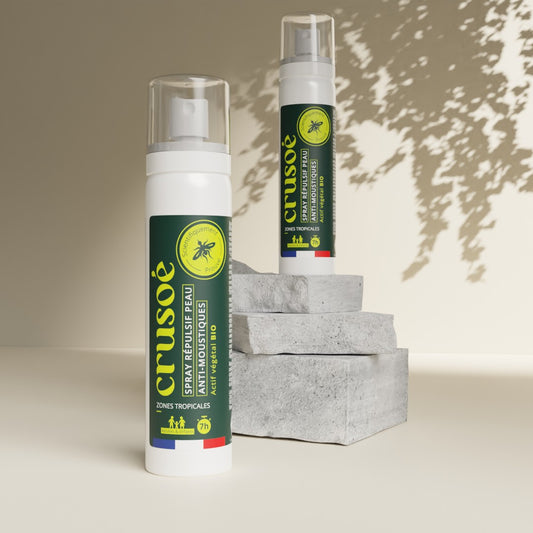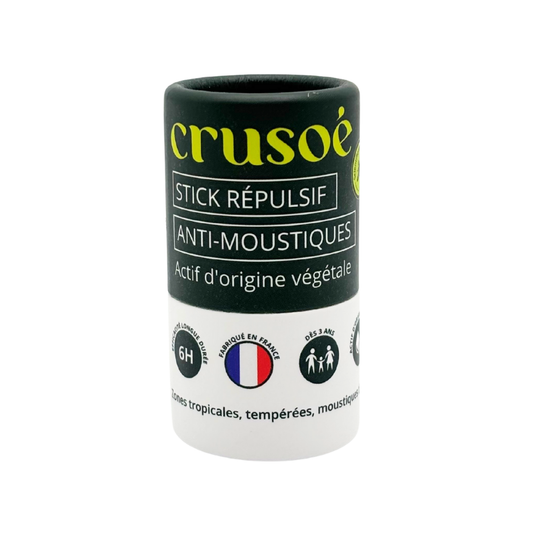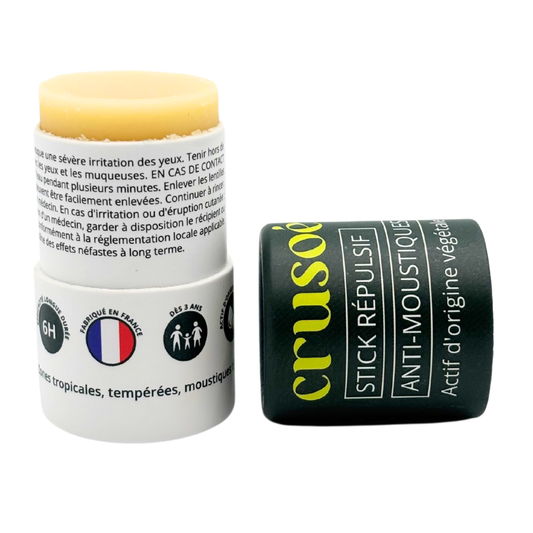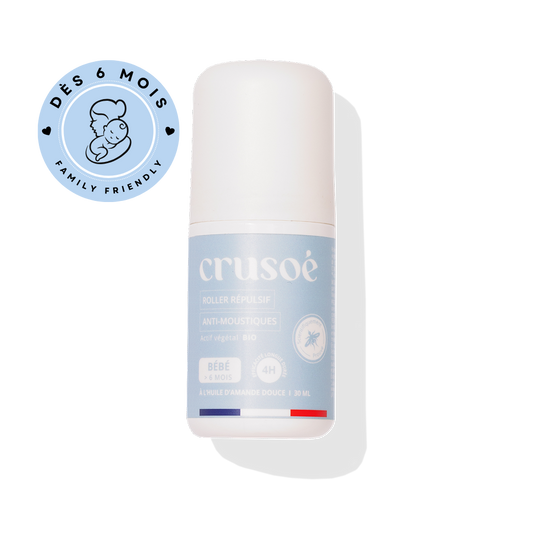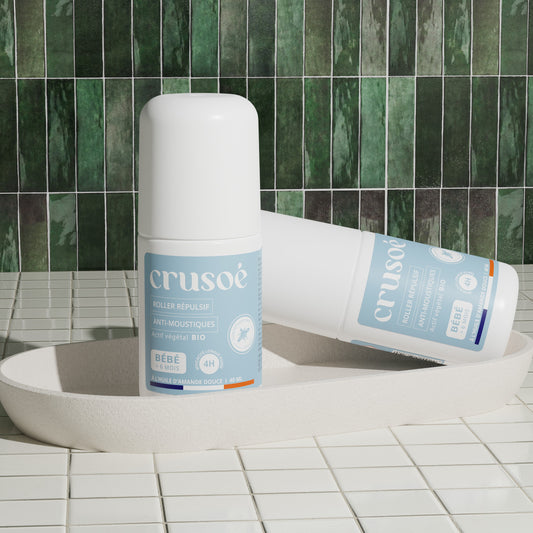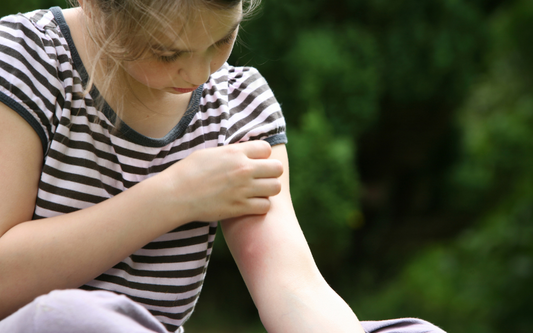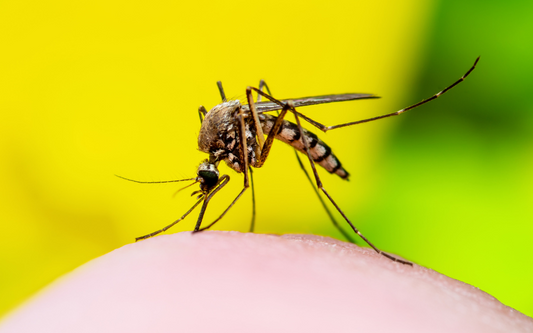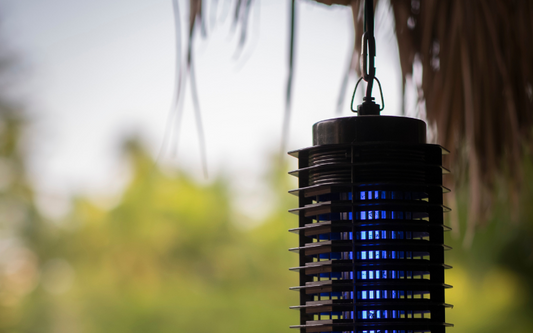Faced with environmental and health concerns, savvy consumers are moving away from synthetic mosquito repellents to natural or naturally-derived mosquito repellents.
Only repellents made from essential oils can be called natural.
These two terms are regulated by the ISO 16128 standard, which can however be confusing and sometimes leads to excessive use of the term natural. A product is called "natural" if it is composed of pure products, existing in raw form in nature or obtained by physical treatment (pressing, grinding, drying, distillation or maceration). 1
So Only repellents composed of essential oils without the addition of synthetic compounds, such as Crusoe, can be described as natural. In fact, an essential oil is obtained by a simple process of distillation of plant material, whose odorous molecules are carried by water vapor. This is an ancestral process that does not require the addition of any chemical product. 2
Crusoe: a rigorous and precise use of essential oils
Historically, citronella essential oils, and more specifically Java citronella essential oil ( Cymbopogan winterianus ), are the first essential oils to have been used as natural repellents. 3 Today, a large number of essential oils, such as eucalyptus, and particularly lemon eucalyptus ( Eucalyptus or Corymbia citriodora ) or more recently Niaouli ( Melaleuca vividiflora ) are used in the formulation of natural repellents. Having become the essential alternative to synthetic products and very popular with the general public due to their plant origin, Not all essential oils are effective and may even be dangerous depending on their composition and/or use. 4
Information and studies on the repellent effectiveness of essential oils are often contradictory, even in scientific journals. This comes from a lack of precision in the plant species used to prepare the essential oil, the concentration of use, the species of mosquito targeted as well as the repellency test carried out. 3,5
o Essential oils are complex mixtures of organic compounds (terpenes, sesquiterpenes, aromatic compounds, oxygenated compounds) whose composition can vary depending on the plant species and the plant parts (leaves, flowers, stems) used. Thus two eucalyptus oils can have very different compositions, and therefore non-comparable repellent activities. For example, a 20% solution of Eucalyptus citriodora essential oil (renamed Corymbia citriodora ) is twice as repellent as the same solution of Eucalyptus globulus. against mosquito Anopheles stephensi . 6
To overcome this problem, Crusoe is always made from the same chemotyped essential oils, the chemical composition of which is rigorously established by gas chromatography.
o Essential oils studied as repellents are tested in the laboratory or outdoors against an available or local mosquito species. Or An essential oil may have very effective repellent activity against one species of mosquito and no effectiveness against another species . For example, the effectiveness of the EO of Cymbopogan winterianus varies from 52 to 100% depending on the Anopheles mosquito species targeted. 6 Particular attention should therefore be paid to the imprecise term “anti-mosquito”.
Crusoe was designed to repel different species of mosquitoes, in the laboratory and in tropical environments, Aedes albopictus , Aedes aegypti , Anopheles gambiae And Culex pipiens , with the same efficiency and for an average duration of 7 h. 7
o Although not mentioned in some studies, The concentration of use of the essential oil is crucial for its repellent activity . Many essential oils have excellent repellent activity at high concentrations, which can lead to abusive “anti-mosquito” labeling, since they cannot be used as they are due to toxicity reasons. 6 The toxicity of essential oils is very often unknown to the general public. Indeed, it is important to remember that natural products are not systematically less dangerous or safer than synthetic products . 4 Java citronella and lemon eucalyptus essential oils are rich in citronellal (about 30 and 70% respectively), which can be irritating to the skin or even allergenic. 8 The essential oils of eucalyptus globulus, radiata and niaouli have a high level of eucalyptol which is very allergenic and toxic if ingested. 9
The formulation of Crusoe has been carefully optimized to be as effective as possible while respecting the regulatory use concentrations of essential oils and scrupulously avoiding the use of essential oils composed of toxic terpenes.
Claire Grison - Biochemistry Engineer, Doctor of Organic Chemistry and Scientific Editor
References:
[1] ISO, ISO 16128-1:2016(en), Guidelines on technical definitions and criteria for natural and organic cosmetic ingredients and products — Part 1: Ingredient definitions, https://www.iso.org/obp/ui/#iso:std:iso:16128:-1:ed-1:v1:en, (accessed 7 January 2022).
[2] N. Boulanger and L. de Gentile, in Personal protection against vectors , eds. G. Duvallet and L. de Gentile, IRD Éditions, Marseille, 2017, pp. 50–116.
[3] LS Nerio, J. Olivero-Verbel and E. Stashenko, Bioresour. Technol. , 2010, 101, 372–378.
[4] C. Grison and A. Moderc, Chemical News .
[5] MF Maia and SJ Moore, Malaria Journal , 2011, 10, S11.
[6] A. Asadollahi, M. Khoobdel, A. Zahraei-Ramazani, S. Azarmi and SH Mosawi, Malaria Journal , 2019, 18, 436.
[7] World Intellectual Property Organization, WO2021005204A1, 2021.
[8] PubChem, Hazardous Substances Data Bank (HSDB), https://pubchem.ncbi.nlm.nih.gov/source/hsdb/594, (accessed 7 January 2022).


